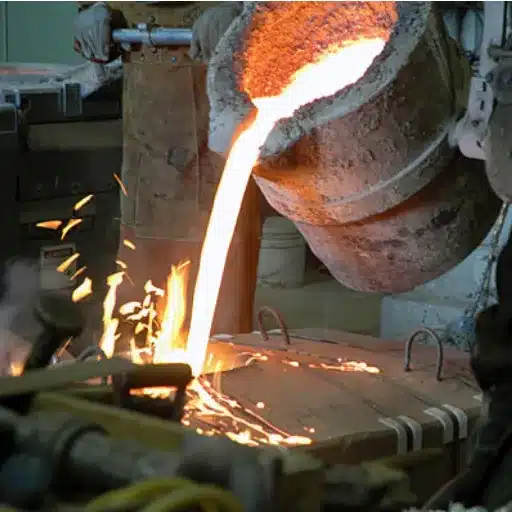Regarded in the aerospace industry and construction for its strength, durability, and versatility, stainless steel seamless tubing has become widely accepted. But what differentiates it from other materials, and how can you ensure maximum durability for your application? This comprehensive guide goes over the characteristics that make stainless steel seamless tubing a unique option. Anyone, be it a professional expert or an industry novice, can gain an understanding of the material’s practical benefits and crucial selection factors from this article. Read more to find out how stainless steel seamless tubing is revolutionizing high-performance applications.
What Are the Main Specifications of Stainless Steel Seamless Tubes?
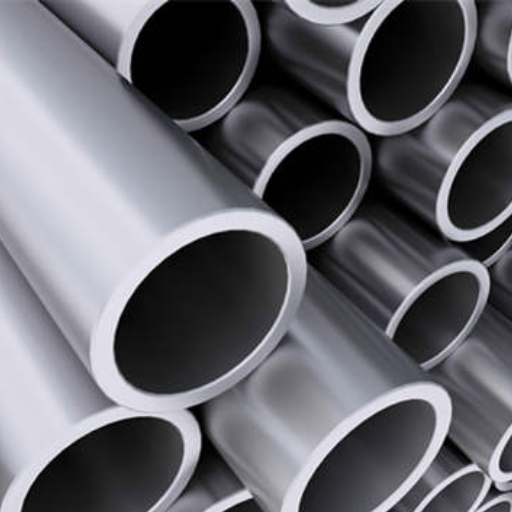
Several key specifications assist in defining the stainless steel seamless tubes, such as:
- Material Grades: These include 304, 304L, 316, and 316L, each of which has varying corrosion resistance and strength.
- Outer Diameter (OD): This ranges between 1/8 inch and 12 inches based on application needs.
- Wall Thickness: This is one of the major factors that defines quality, and is usually used in standard schedules such as SCH 10, SCH 40, or SCH 80.
- Standards Compliance: This includes internationally recognized standards like ASTM A213, ASTM A269, or ASTM A312, which guarantee the seamless stems’ quality.
- Surface Finish: tailored to serve particular functional or aesthetic specifications, ranging from polished, pickled, or annealed.
To ensure the quality of products served to sectors like chemical processing, oil and gas, and construction, these specifications are put in place.
Nominal Pipe Size and Standard Dimensions
The Nominal Pipe Size (NPS) is a system for measuring the diameter, wall thickness, and pipe size of a piping system. Measurement standardization always improves compatibility across many industries. NPS does not relate to the actual outer diameter (OD) or inner diameter (ID) but is rather a simplified method of classification.
Here is a table depicting the common sizes of stainless steel pipes:
|
NPS (inches) |
Outside Diameter (OD) (inches) |
Wall Thickness (SCH 40) (inches) |
Wall Thickness (SCH 80) (inches) |
|---|---|---|---|
|
1/2 |
0.84 |
0.109 |
0.147 |
|
1 |
1.315 |
0.133 |
0.179 |
|
2 |
2.375 |
0.154 |
0.218 |
|
4 |
4.5 |
0.237 |
0.337 |
|
6 |
6.625 |
0.28 |
0.432 |
|
8 |
8.625 |
0.322 |
0.5 |
For the bigger sizes that have different schedules, further specifications will be needed for factors such as pressure, flow rate, and temperature. These standardized dimensions are extremely important for safety and performance in high-demand environments, including oil refineries, chemical plants, and large-scale infrastructure projects.
Mechanical Properties of Stainless Steel Seamless Tubing
Industries everywhere recognize seamless stainless steel tubing as having remarkable strength, versatility, and an unmatched ability to resist corrosion. Its value stems from the property characteristics of its grade and processing method. Generally, these include the following:
- Tensile Strength: Certain grades have a range from 515 MPa to over 750 MPa, which means they can endure a great amount of stress without breaking.
- Yield Strength: For standard grades, yield strength begins at 205 MPa, increasing to 450 MPa for high-strength alloys. This provides performance under load.
- Elongation: Depending on its grade, stainless steel tubing tends to show elongation of 20% to 40%. These traits enhance its flexibility as well as the ability to withstand tension without cracking.
- Hardness: The Rockwell hardness of stainless steel seamless tubing is usually between 70 HRB – 100 HRB, depending on the alloy and temper. Conclusively, it is hard to deform.
- Impact Resistance: Even stainless steels with low temperatures possess great toughness, rendering them useful for cryogenic uses.
The seamless stainless-steel tubing’s mechanical properties make it ideal for use in aerospace, construction, and the petrochemical industries where safety, durability, and long-term operability are critical.
Alloy Composition and Standards for Stainless Steel
Stainless steel is a flexible alloy mainly of iron and chromium, with stainless steel containing molybdenum, nickel, and manganese being present depending on the grade and intended use. The steel gets its corrosion-resistant property from the alloying element chromium, which is above 10.5%, which forms a thin protective oxide layer on the surface of the steel. Nickel improves ductility and toughness, whereas molybdenum increases pitting and crevice corrosion resistance of the alloy, specifically in chloride-rich environments.
The most common families of stainless steel include austenitic, ferritic, martensitic, duplex, x, and precipitation hardened steels. For example, austenitic stainless steels like 304 and 316 are formulated with high nickel and chromium alloying, which increases their corrosion resistance and makes them suitable for industrial usage.
Organizations like the American Society for Testing and Materials (ASTM) International, EN – European norm, or UNS – Unified numbering system set the standards for stainless steel alloys. For example, ASTM A312 defines pipes of austenitic stainless steels as seamless, welded, and heavily cold worked, while EN steel numbers use numerical systems like “1.4401” for 316 stainless steel to identify the composition. These standards are essential to ensure uniformity of specifications and performance throughout the industries, from aerospace to food processing.
How Is Stainless Steel Seamless Tubing Manufactured?
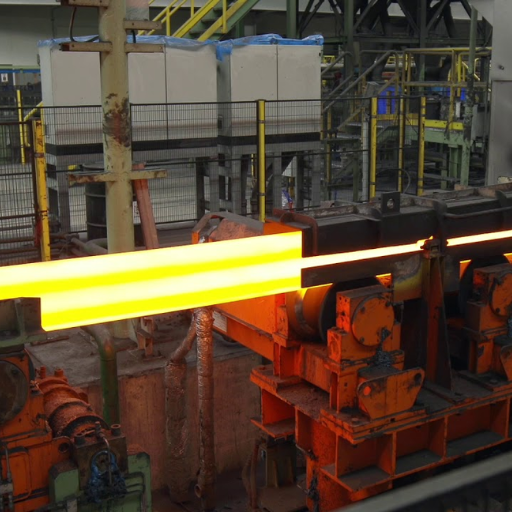
The production of seamless stainless steel tubing begins with a solid cylindrical steel billet. The billet is heated significantly before being pierced by a mandrel, which creates a hollow tube. The tube is then elongated, extruded, or cold-drawn into a hollow form with specific dimensions and aesthetically pleasing surface finishes. The homogeneous tubing undergoes uniformity and quality checks, which elevate the standards of the final product.
Manufacturing Process of Seamless Stainless Steel
Precision and durability in the seamless stainless steel tubing manufacturing process are achieved using a number of advanced stainless steel tubing manufacturers. After the initial piercing of the heated billet, the hollow tube undergoes more cutting procedures, which improve its size. An example of this is plug mill rolling, where the tube is lengthened and uniformly thinned at the entry and exit points through rollers. Another option is the mandrel mill process, where a rotating mandrel maintains the wall thickness while the length of the tube is further increased.
Accuracy is ensured through modern technologies like computerized control systems, which track and regulate criteria such as temperature, pressure, and the speed of rolling. Innovative treatments of these tubes improve their mechanical properties, for instance, adding heat in a controlled fashion during annealing makes the tubing more resistant to corrosion and less brittle.
Looking at current market data, it appears that the worldwide market for seamless stainless steel tubing has been growing along with the energy, construction, and automotive industries. Tubes usually measure between 6mm to 250mm in diameter, with wall thicknesses from 0.5mm to 25mm to meet versatile requirements. Various inspections, including ultrasonic and eddy-current supervision, are known to maintain remarkable quality control throughout every production level. Such progress guarantees that the final products are optimized for industries that depend on supremely efficient materials.
Quality Control in Seamless Steel Production
Steel seamless production quality control processes have been enhanced due to industry advancement and ensuring accuracy as well as dependability. Today’s industry uses automated quality control systems that continually check for errors throughout all production phases. Surface and subsurface abnormalities can be detected using non-destructive methods such as magnetic particle inspection (MPI) and radiographic testing (RT), which do not alter the item’s structure.
Research conducted recently shows a notable decrease in defect rates, and some industries claim an accuracy in flaw detection above the 95% mark. Furthermore, systems for guarantee of origin now monitor all production stages, enabling precise supervision of every phase a tube undergoes from a batch of materials, machining conditions, and inspections done to the final result. Such improvements help in reinforcing legislation boundaries while attending to the particular needs of sectors such as aerospace, energy, and heavy engineering.
Difference Between Seamless and Welded Austenitic Stainless Steel Tubing
There are two main categories of Austenitic stainless steel tubes: seamless and welded. Each type has its own distinctive attributes and ways of manufacturing. Seamless tubing is manufactured by starting with a solid billet of stainless steel. A hole is then created, and a tube is formed. There is no welded joint in the tube, which gives it superior strength and resistance to internal pressure. Thus, seamless tubing is used in critical applications, such as in the petrochemical and aerospace industries, trusted for its reliability and high-pressure tolerance.
Welded tubing, on the other hand, is made by rolling a stainless steel plate into a tubular shape and welding the seam. The strength and corrosion resistance of welded tubes have increased greatly due to advancements in welding technology and post-production heat treatments. This makes welded tubes a less expensive option for applications that do not demand as much. Welded tubing is also known to have better dimensional accuracy and can be produced with thinner walls than seamless tubing.
Recent reports suggest that seamless tubes are favored for excessive temperature and pressure conditions, while welded tubes are more common in the automotive and construction industries. For instance, it is reported that welded tubing is 20-30% cheaper to produce than seamless tubing, which makes it more profitable for large projects. In terms of corrosion-resistance performance, however, seamless tubing often outdoes its welded counterpart due to the lack of heat-affected zones prone to corrosion in chlorinated environments.
The right choice greatly depends on the operational demands. Certain requirements like cost, strength, precision, and the surrounding environment need to be taken into consideration.
What Are the Key Benefits of Stainless Steel Seamless Pipes?
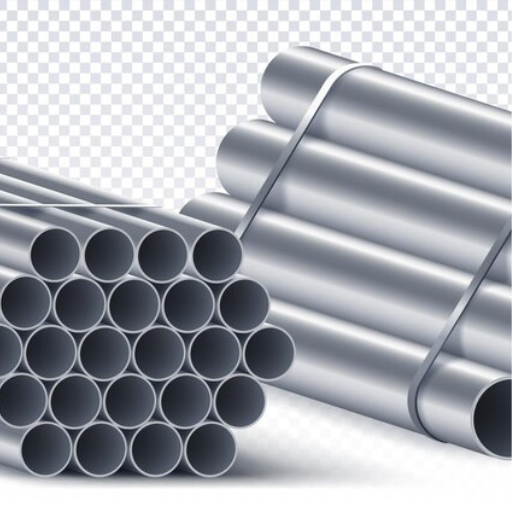
Stainless steel seamless pipes offer several key benefits:
- Superior Strength and Durability: Their uniform structure provides high strength and resistance to mechanical stress.
- Corrosion Resistance: Seamless pipes outperform the rest in resisting corrosion, particularly in harsh and high-pressure environments.
- Smooth Interior Surface: Absence of welded seams allows for a smooth inner surface. This is crucial for effective fluid flow and reduced risk of buildup at the same time.
- Wide Temperature Tolerance: It’s a common problem for machines to perform poorly under extreme temperatures, but not these guys. Their efficacy is practically limitless.
- Reliability: Welding leaves behind joint seams, and every seam increases the chance of weak points or failure over time. Without welded joints, this becomes much less likely.
These features result in seamless pipes being an outstanding option for domains where superior dependability, seamless operations, and high precision machinery are mandatory.
Corrosion Resistance and Durability of Stainless Steel Seamless
Stainless steel seamless pipes are known to have the best industry-level seamless pipes and also have the best resistance to corrosion and wear because of it. Furthermore, the durability, heat resistance, and wear resistance are attributed to the chromium element present in the alloy. Chromium deposits a passive oxide on the rim of the steel, This layer protects it from rust and oxidation. An example would be stainless steel 304 and 316 that sustain high levels of humid environments, chemicals, and seawater without corroding. Which means, these alloys can and are widely used in industrial and mechanical applications.
As a result of these factors, the life span of stainless steel seamless pipes is lengthened, which further preserves their useful life. Stainless steel is studied to endure above fifty years with very little maintenance and also sustains the lowest long-term costs. Their seamless build further enhances structural strength because of the decreased weak points resulting from welds. This alloy even sustains mechanically extreme temperatures from -200°F and above 1500°F, which makes it highly suitable for cryogenic and high-temperature industries.
In this context, it determines the long-term value of investment in stainless steel seamless pipes for demanding industries like construction, oil and gas, and food processing.
High Pressure Applications of Stainless Steel Seamless Tubing
The remarkable strength, durability, and corrosion resistance of stainless steel seamless tubing make it widely used in high-pressure applications. Below is an outline of its applications and benefits:
- Oil and Gas Industry
-
-
- Transmitting oil and gas at high pressure through pipelines.
- Hydraulic control lines for offshore oil drilling rigs.
- Corrosion resistance in sour gas with high concentrations of H₂S.
-
- Power Generation
-
-
- Applied at high pressure in steam systems.
- To and from heat exchangers in thermal and nuclear power stations.
- Containment of superheated water in geothermal plants.
-
- Chemical and Petrochemical Industries
-
-
- Transport of aggressive fluids, like acids or strongly reactive fluids, safely.
- High-pressure reactors and processing apparatus.
-
Extreme temperatures and pressures during chemical reactions.
-
- Aerospace and Defense
-
-
- Hydraulic systems that operate the landing gear and brakes of an aircraft.
- Fuel and propellant lines in space mission systems.
- High-pressure systems are associated with defense and weapon systems.
-
- Food and Beverage Industry
-
-
- Sanitization via high-pressure water jets.
- Pressurized transportation of liquids, e.g., milk and carbonated drinks.
-
- Pharmaceuticals and Biotechnology
-
-
- Transporting delicate fluids at elevated pressures while maintaining sterility.
- Maintaining the cleanroom’s contamination control.
-
Medical grade gases in high high-pressure system.
-
Key Data for High-Pressure Performance:
- Yield Strength: Reaches a maximum of 200 ksi. (kilopounds per square inch).
- Pressure Range: With a specific design and wall thickness, it can surpass the 20,000 psi mark.
- Temperature Tolerance: Works effectively under extreme conditions; capable of enduring cryogenic temperatures all the way to 1500°F.
- Corrosion Resistance: Striking ability to withstand highly aggressive and corrosive chemicals in harsh conditions.
These versatile characteristics explain why seamless stainless steel tubing is a preferred option for critical high-pressure applications in various industries.
Reliability of Stainless Steel in Extreme Conditions
The remarkable combination of properties makes stainless steel withstand some of the highest environmental and operational conditions seamlessly without any form of failure. Due to its tensile strength, it can withstand mechanical stress, which makes stainless steel suitable for heavy-duty applications. In addition, higher grades like 316L and 304 stainless steels offer tremendous oxidation and corrosion protection even when exposed to humid, salty, or chemical environments and situations.
Stainless steel, for example, does not lose its mechanical properties nor become brittle at cryogenic temperatures of -320°F. On the other hand, some grades, like austenitic stainless steel, can endure and remain stable while resisting scaling at over 1500°F. This extensive range is what makes stainless steel a highly relied upon material in petrochemical plants, aerospace engineering, and power generation systems.
Moreover, in terms of lifespan, studies indicate that stainless steel piping and structures can endure over 50 years in non-aggressive environments, and 25 years in conditions with more aggressive corrosive aspects. These results highlight lowered maintenance costs and reduced structural replacement costs, which is why this material is needed. Its extreme reliability further supports its use in industries needing unquestionable dependability.
What Are the Different Types of Stainless Steel Used in Seamless Tubing?
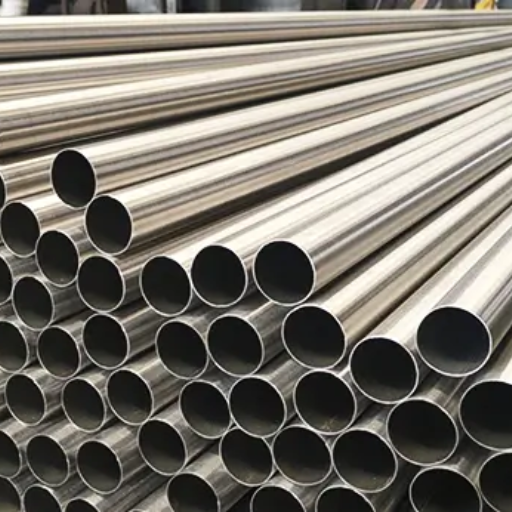
Different grades of stainless steel are typically utilized in seamless tubing fabrication, each suited for its own use case:
- 304 Stainless Steel – This type is widely utilized in food, chemical, and general processing industries due to its excellent versatility and corrosion resistance.
- 316 Stainless Steel – Further enhanced with molybdenum, this type has the highest resistance to corrosion, especially in marine and other highly corrosive environments.
- 321 Stainless Steel – Best for aerospace and industrial applications as it contains titanium, which increases strength and resistance to high temperatures.
- 904L Stainless Steel – Best suited for very specialized and extreme environments, as it is a high-alloy stainless steel with extraordinary resistance to acids.
Such types are selected according to the material’s resistance, strength, and its applicability to the intended use.
Austenitic Stainless Steel Tubes and Their Properties
Austenitic stainless steel tubes are widely used in various industries like chemical processing, food handling, or transport because of their exceptional weldability and mechanical features as well as a high level of corrosion resistance. Important characteristics are high chromium and nickel content, 16-26% and 6-22% respectively, which aids in durability as well as oxidation resistance even at high temperatures.
Mechanical Properties and Advantages
- Corrosion Resistance – 316 and 304 Grade stainless steels are known to have an austenitic structure, which gives them special protection against corrosion in acidic and chloride-containing environments. Molybdenum presence in 316 grade enhances the resistance against pitting and crevice corrosion further.
- High Temperature Performance – For some grades like 310 and 321, these tubes can perform thermally and mechanically in excess of 870 °C (1600 °F), which is their temperature limit for strength and formability.
- Toughness at Low Temperatures – In comparison with ferritic stainless steels, austenitic tubes are more cryogenically impact resistant and ductile. This is advantageous for use in applications such as LNG processing.
- Fabrication and Welding – Based on the other types of steels, austenitic stainless steels have a high formability. Generally, they do not require heating before welding or cooling after welding, which simplifies treatment processes.
Applications and Industries
- Chemical Processing – Grades 316 and 904L outperform others in very difficult chemical settings because of their resistance to acidic and chloride-containing media.
- Pharmaceuticals and Food Processing – Austenitic tubes are FDA approved because of their smooth, non-porous surfaces, which prevent bacterial colonization, and their resistance to corrosion ensures their long life.
- Architecture and Construction – Their beauty and strength make them ideal materials for structural and ornamental elements that are to be exposed to the weather.
- Oil and Gas – Austenitic tubes are popular in the construction of pipelines and offshore platforms because these applications require excellent resistance to pressure, corrosion, and extreme temperatures.
Key Data on Material Performance
- Grade 304 – Yield strength of 215 MPa (31 ksi). Also has excellent corrosion resistance in standard environments.
- Grade 316 – Yield strength of 205 MPa (30 ksi). Resistance to more corrosive and saline conditions is superior because of the molybdenum content.
- Grade 321 – Excellent creep and stress rupture properties, ideal for 800 °F to 1500 °F (427 °C to 815 °C)
Choosing austenitic stainless steel tubes requires considering both the specific grade and properties in relation to the operating environment to achieve the desired performance and service life.
Commonly Used Stainless Steel Grades for Seamless Pipes
- Grade 304 – Grade 304 is one of the most preferred stainless steels for seamless pipes due to having versatility to withstand corrosion. It is used in food chemical industries and has a tensile strength of 505 MPa (73 psi) and a yield strength of 215 MPa (31 ksi).
- Grade 316/316L – Grade 316/316L is known for its increased resistance to harsh environments under corrosion. It is used around under chloride environments. Welding applications are done under low carbon grade 316L that prevents carbide precipitation, while yield strength is 205 MPa (30 Ksi) and yields a tensile strength reaching 515 MPa at 75 Ksi).
- Grade 310 – Grade 310 is ideal when an element is expsed to highly oxidized environments since it can resist oxidized up to 2010 k (1100 cm), and has a tensile strength of 520 mg (75k mese), so it works perfectly while furnace parts, heat exchangers, and various other equipment are required in high server settings.
- Grade 317 – Strikingly resistant to chloride than grade 316 while providing greater support and withstands with a tensile strength of 515 MPa (75k), making it useful for industrial chemical processing work, making it perfect for its molybdenum content.
- Grade 321-based alloy was developed to improve resistance to intergranular corrosion after the material has been subjected to high temperature. It is best suited for use in thermal equipment and exhibits superb mechanical properties in extreme heat. In addition, it has a tensile strength of approximately 515 MPa (75 ksi).
As for stainless steel seamless pipes, knowing the exact details of the application is critical, including factors like mechanical strength, resistance to corrosion, and exposure to intensely hot and corrosive elements. Selecting these parameters appropriately guarantees optimal performance over an extensive range of harsh conditions.
What Are the Key Differences Between Stainless Steel Seamless and Welded Pipes?
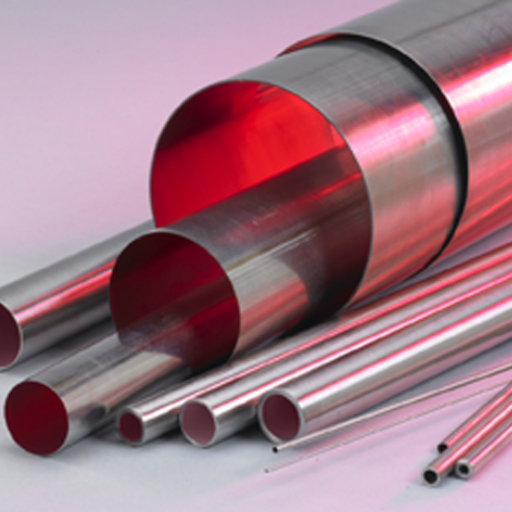
Stainless steel seamless pipes are made from a solid billet, which provides them with an even structure and no weld marks. Hence, they are more effective for high pressure, extreme temperature, and critical levels of performance.
Welded pipes are comparatively easier and cheaper to produce; hence, they are made in large diameters. However, they are made by welding a rolled steel strip or plate, which makes the seam visible. This becomes an issue in high-pressure and high-corrosion environments as the area along the seam is prone to defects.
Each has its distinct advantages and disadvantages. Choosing between them should be determined based on application and specific details like strength, cost, and performance needs.
Structural Integrity: Seamless vs Welded Steel Pipe
For higher strength and pressure tolerance applications, I would choose seamless steel pipes over welded ones due to the higher structural integrity. Seamless pipes have no welded seams, which means that there are no weak points, thus minimizing the chances of failure under stress. If cost-efficiency and availability are prioritized, welded pipes do perform well in less demanding environments, provided the weld quality is up to standard. In the end, the choice depends on how one balances the strength requirements with budget and operational requirements.
Performance Comparison in High-Stress Applications
Here’s a comprehensive analysis of seamless and welded pipes in regards to their performance in demanding application scenarios:
- Strength and Durability
-
-
- Seamless Pipes
-
- Lack of welded seams gives rise to a monopiece stage pipe.
- More tensile strength and superior functioning under pressure.
- Suitable for extremely demanding and dependable application environments.
- Welded Pipes
-
- Possible succumbs of the welded seams.
- Weaker tensile strength compared to seamless pipes.
-
May perform decently well if the welding is of high quality.
-
- Pressure Tolerance
-
-
- Seamless Pipes
-
- Have better internal and external pressure consequences.
- Best acceptable for oil and gas transportation as they have higher pressure oil and gas flow.
- Welded Pipes
-
- Pressure boundaries are influenced by the weld quality and material used.
-
Uses moderate pressure services.
-
- Cost Efficiency
-
-
- Seamless Pipes
-
- Higher costs for complex manufacturing processes.
- Have longer lead times with gaps in certain sizes.
- Welded Pipes
-
- Significantly cheaper and more accessible.
- Ideal for budget-restricted projects.
-
- Operational Flexibility
-
-
- Seamless Pipes
-
- Withstand severe temperatures and corrosive environments.
- Welded Pipes
-
- Less stressful working conditions.
-
General usage, such as water and air transport.
-
This benchmarking analysis gives an insight into the performance of seamless and welded pipes under extreme pressure, alongside other stress factors, providing sufficient information for the appropriate planning by decision makers.
Where Are Stainless Steel Seamless Tubes Commonly Used?
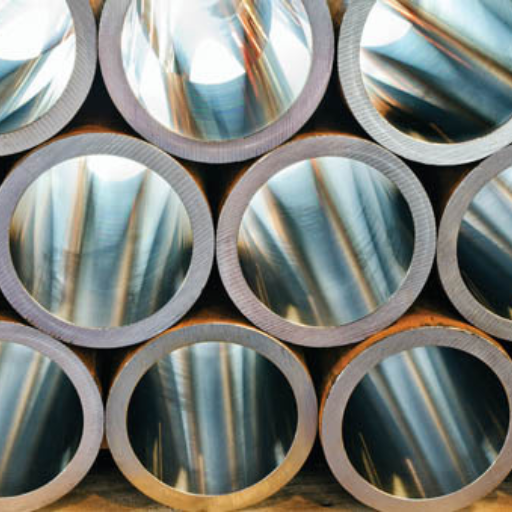
The following industries utilize seamless tubes made out of stainless steel because of their high durability, strength, and extreme condition resistance:
- Oil and Gas Industry – For moving corrosive liquids and managing high-pressure regions.
- Chemical and Petrochemical Industry –For processes involving the treatment of chemicals with high temperature and corrosion.
- Power Generation –For use in boiler and heat exchangers systems.
- Automotive Industry – For parts of exhaust systems and precise machine parts.
- Medical Field – For the fabrication of surgical instruments and other medical devices due to its hygienic properties and durability.
Industrial Applications of Stainless Steel Seamless Pipes
Seamless stainless steel pipes are essential in different industries because of their performance characteristics. They have no seams, eliminating any risks of weak points, thus increasing their strength, dependability, and ability to withstand harsh environmental conditions. These are some of the details and performance metrics that demonstrate their usefulness across a number of industries:
- Corrosion Resistance: Stainless steel seamless pipes have one of the highest levels of corrosion resistance, which is critical for chemical processing and marine engineering. For instance, Grade 316 stainless steel is famous for its chloride resistance, which helps protect equipment from damage in coastal and high-salinity regions.
- High-Temperature Strength: These pipes are able to withstand high operating temperatures, which is absolutely critical in power generation and Petrochemical processing. They work efficiently at temperatures above 1,500 °F (815 °C), which helps maintain the system’s efficiency without material degradation.
- Improved Efficiency in Fluid Handling: Seamless pipes have a smooth internal surface, which minimizes the friction of the fluid, which is critical in the oil and gas industry. Studies show that using seamless stainless steel pipes can lower pressure drops in pipelines by 15 percent, increasing overall system efficiency.
- Mechanical Stability: The lack of welds in seamless pipes renders homogeneous strength and mechanical stability, capable of withstanding extremely high pressure in aerospace and automotive components. For example, seamless pipes used in hydraulic systems are designed to endure pressures exceeding 20,000 psi.
- Longevity and Cost-Efficiency: Even though stainless steel seamless pipes are more expensive than welded pipes, they are more durable and require much less maintenance, which lowers overall costs for welded pipes. Industries with high operational tempos benefit greatly from these cost savings.
Due to meeting global standards in engineering and manufacturing, stainless steel seamless pipes have unmatched reliability and performance in demanding industrial contexts. These pipes are adaptable to diverse environments, which solidifies their importance to modern manufacturing and infrastructure development.
Oil and Gas Industry Uses for Seamless Stainless Steel Tubing
The seamless type of stainless steel tubing is crucial in the oil and gas industry due to its strength, how well it withstands corrosion, and how stainless steel tubing is able to endure dangerously high levels of pressure and temperatures. I make use of it without limit in the safe transportation of gas, oil, and various other liquids, while also drilling, in offshore platforms, and in pipelines, where dependability and efficiency are a must.
Chemical Processing and Pharmaceutical Applications
Seamless stainless steel tubing is used in the chemical and pharmaceutical industries because of its resistance to corrosion and contamination. These industries demand materials that can withstand aggressive chemicals, high temperatures, and strict hygienic standards. Stainless steel tubing meets all these requirements. It is widely used in exchangers, reactors, and piping systems in chemical processing, providing safe and efficient management of dangerous materials. The pharmaceutical industry benefits from stainless steel’s non-porous surface, which reduces bacterial growth and enables easy cleaning to meet strict FDA and GMP requirements.
Industry analysis indicates that the demand for stainless steel in pharmaceuticals is increasing, fueled by the rise in the production of biologics and vaccines. Moreover, seamless tubing guarantees the clean and leak-proof transport of critical liquids and gases, which is essential for safety and purity of products. As a part of the Global Market Insights report, the worldwide pharmaceutical industry is anticipated to surpass $1.5 trillion by 2028, which means the dependence on critical components such as seamless stainless steel tubing will continue to grow. This shift emphasizes the importance of the tubing in facilitating thorough innovation while ensuring compliance to sustain these fast-paced industries.
Reference Sources
- “A Recent Review on the Failure Analysis of Boiler Tube”1:
- Key Findings: This study focuses on the failure mechanisms in boiler tubes, including overheating, creep, stress corrosion, cracking, and oxidation. It highlights the importance of stress analysis, environmental conditions, and maintenance in preventing failures. The research also emphasizes the role of material properties, such as the composition of stainless steel, in resisting corrosion and stress-induced damage.
- Methodologies: The study utilized various techniques like SEM-EDX, metallographic examinations, and chemical analysis to investigate failure causes. It also reviewed case studies and experimental data to classify failure behaviors and propose preventive measures.
- “The Ability to Clinching as a Function of Material Hardening Behavior”2:
- Key Findings: This research explores the clinching process for joining metallic materials, including stainless steel. It identifies strain hardening properties as critical for forming durable joints. High-strain hardening materials like X5CrNi18 10 stainless steel were found to be challenging for clinching due to their deformation resistance.
- Methodologies: The study conducted tensile tests and shear-tensile tests on various materials, including stainless steel, to evaluate their clinchability. It used Swift’s hardening law to model material behavior and assess joint strength.
Frequently Asked Questions (FAQs)
Q: What are the main characteristics of stainless steel seamless tubing that contribute to its durability?
A: Stainless steel seamless tubing offers several key advantages, including excellent corrosion resistance, high tensile strength, and exceptional durability. Unlike carbon steel, stainless steel contains chromium (minimum 10.5%), which forms a passive oxide layer that prevents surface corrosion. The seamless construction eliminates weak points that might occur in welded tubes, enhancing structural integrity. Additionally, stainless steel alloys like 304 and 316 provide resistance to various chemicals, temperature extremes, and mechanical stress, making them ideal for demanding environments. These characteristics ensurethat stainless steel seamless tubes are essential components in applications requiring long-term reliability.
Q: What is the difference between stainless steel pipe and stainless steel tubing?
A: The difference between stainless steel pipe and tubing lies primarily in how they’re specified and their intended applications. Pipes are typically measured by nominal pipe size (NPS) and schedule number (wall thickness), while tubes are specified by actual outside diameter and wall thickness. Pipes are generally designed for transferring fluids or gases under pressure, whereas tubes are often used in structural, mechanical, or instrumentation applications. Stainless steel pipe fittings are standardized, while tubing may require custom fittings. Additionally, seamless tubes usually have tighter dimensional tolerances, smoother surfaces, and undergo more rigorous testing than pipes, especially for high-precision applications.
Q: Which types of stainless steel are most commonly used for seamless tubing?
A: The most widely used stainless steel alloys for seamless tubing include austenitic grades like 304 (18% chromium, 8% nickel) and 316 (with added molybdenum for enhanced corrosion resistance). Ferritic stainless steel grades (400 series) are chosen for moderate corrosion resistance applications at lower costs. Martensitic stainless steel types offer high strength but lower corrosion protection. For environments requiring exceptional resistance to pitting and stress corrosion, duplex stainless steels that combine properties of austenitic and ferritic grades are preferred. The selection depends on specific requirements regarding corrosion resistance, strength, temperature resistance, and cost considerations.
Q: How does the corrosion resistance of stainless steel seamless tubing compare to carbon steel?
A: The corrosion resistance of stainless steel seamless tubing vastly outperforms carbon steel in most environments. While carbon steel readily oxidizes when exposed to moisture and air, forming rust that progressively damages the material, stainless steel forms a self-healing passive chromium oxide layer that protects against corrosion. This makes stainless steel tubing suitable for a wide range of aggressive environments, including marine applications, chemical processing, and food production. Grade 316 stainless steel, with added molybdenum, provides exceptional resistance to chlorides and acids. The superior corrosion resistance translates to longer service life and reduced maintenance costs compared to carbon steel, despite the higher initial cost of stainless steel.
Q: What industries commonly use stainless steel seamless tubing and why?
A: Stainless steel seamless tubes are utilized across a wide range of industries due to their strength and corrosion resistance. In the oil and gas sector, they transport corrosive fluids under high pressure and temperature. The chemical processing industry values its chemical resistance and cleanliness. Medical and pharmaceutical manufacturers choose them for their hygienic properties and ease of sterilization. Food and beverage production relies on non-contaminating surfaces. The aerospace industry uses them for hydraulic systems due to their reliability under extreme conditions. Nuclear power plants employ them for their ability to withstand high radiation. The automotive sector uses them for fuel and brake lines. These diverse applications demonstrate why steel seamless tubes are essential across industries requiring dependable, long-lasting components.
Q: How does the manufacturing process affect the quality of stainless steel pipe?
A: The manufacturing process significantly impacts stainless steel pipe quality. Seamless tubes, created by piercing solid billets, offer superior structural integrity compared to welded varieties since they lack seams that can become failure points. The quality of raw materials, particularly the purity of steel alloys, directly affects performance. Heat treatment processes like annealing, normalizing, or quenching determine the final mechanical properties. Surface finishing treatments enhance corrosion resistance and reduce friction. Strict quality control including ultrasonic testing, hydrostatic pressure testing, and X-ray inspection, ensures structural integrity. Advanced manufacturing technologies like cold drawing improve dimensional accuracy and surface finish. These factors collectively determine whether the final product can withstand demanding applications where strength and durability ensure reliable long-term performance.
Q: What factors should be considered when choosing the right stainless steel seamless tubing for specific applications?
A: When selecting stainless steel seamless tubing, several key factors must be evaluated. First, assess the operating environment, including exposure to corrosive substances, temperature extremes, and pressure requirements. Different grades (304, 316, duplex) offer varying levels of corrosion resistance. Consider mechanical requirements such as tensile strength, hardness, and fatigue resistance. Evaluate temperature performance needs—some alloys maintain integrity at extreme temperatures better than others. Analyze required dimensions, including outside diameter, wall thickness tolerances, and length specifications. Factor in regulatory compliance for industries like food processing or pharmaceutical manufacturing. Finally, balance cost considerations against performance needs, as higher-performing alloys typically command premium prices. The cost of stainless steel tubing should be weighed against its longevity and reduced maintenance requirements.
Q: How do seamless and welded stainless steel pipes compare in performance?
A: Seamless and welded stainless steel pipes differ significantly in performance characteristics. Seamless pipes, manufactured by hot or cold forming solid billets, offer uniform strength throughout with no weak points, making them superior for high-pressure applications and cyclic loading conditions. They generally provide better concentricity and more consistent wall thickness. Welded pipes, created by forming and welding steel strips, are more economical and available in larger diameters and longer lengths. While modern welding techniques have improved significantly, the weld seam remains a potential weak point under extreme conditions. For critical applications in the oil and gas sector, chemical processing, or high-pressure systems, seamless steel tubes are essential. For less demanding structural applications, properly manufactured welded pipes may offer sufficient performance at lower cost.
Q: What maintenance practices extend the lifespan of stainless steel seamless tubing?
A: To maximize the lifespan of stainless steel seamless tubing, implement regular cleaning to remove contaminants that might initiate corrosion, especially in chloride-containing environments. Avoid contact with carbon steel tools or storage that can cause cross-contamination and galvanic corrosion. Periodically inspect for signs of localized corrosion, particularly in joints and bends. When cuts are necessary, use tools specifically designed for stainless steel to prevent free iron contamination. After installation, passivate the surface using appropriate chemical treatments to restore the protective oxide layer. In high-temperature applications, monitor for scaling or thermal fatigue. For systems transporting fluids, maintain proper flow rates to prevent deposit buildup or erosion. These practices enhance the already impressive durability of stainless steel tubing, extending service life across various industrial applications.
Q: How do environmental factors affect the performance of stainless steel seamless tubes?
A: Environmental factors significantly impact the performance of stainless steel seamless tubes. Temperature extremes can alter mechanical properties—excessive heat may cause sensitization in some grades, while extreme cold can affect ductility. Chloride-containing environments (coastal areas, road salt, certain chemicals) can induce pitting or crevice corrosion, particularly in lower-grade alloys. Acidic or alkaline conditions may compromise the protective oxide layer, with effectiveness depending on the specific stainless steel grade. Microbial-influenced corrosion can occur in stagnant water systems. UV radiation generally has minimal effect, unlike with many polymers. Mechanical stresses combined with corrosive environments may lead to stress corrosion cracking. Understanding these environmental interactions is crucial when selecting appropriate stainless steel grades—316 offers better resistance in marine settings, while duplex stainless provides excellent performance in combined high-stress and corrosive conditions.

